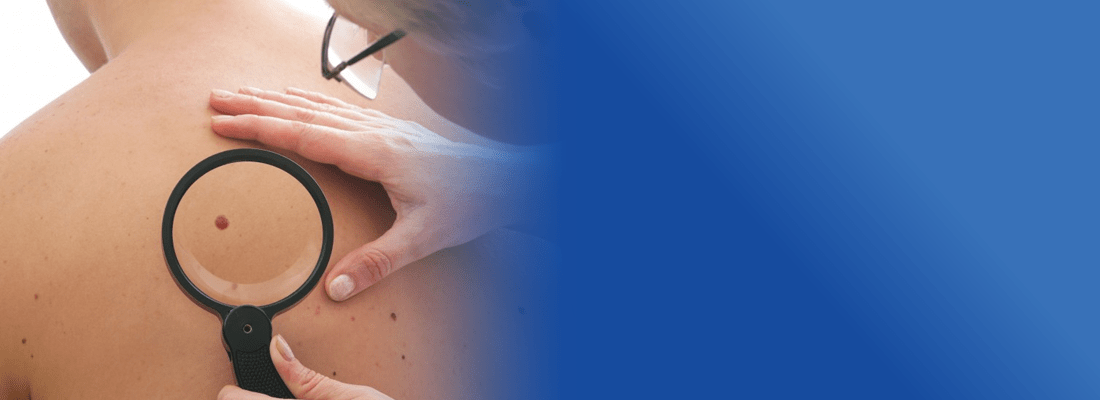People usually have 10 to 40 moles anywhere on their skin. As common skin growths, many moles are nothing to be worried about. However, if you don’t like a mole on your skin or think that it is affecting your appearance, there are some ways to remove it.
It is particularly must to remove moles if they have changed in appearance because it could be a sign of skin cancer. While referring to the dermatologist is crucial before taking any step, it is also worth understanding what options you have for mole removal. The following blog discusses this topic more in detail.

Moles are basically the concentration of melanocytes or pigment-producing cells in the skin. Most moles appear in childhood and adolescence. They tend to change in colour and size as you grow. Although the causes of moles are not entirely clear, it is usually believed to be a result of sun damage and the interaction of genetic factors. New moles also appear when there is a fluctuation in hormonal levels, such as pregnancy.
Here are some types of moles you might find on your skin:
Also known as birthmarks, these moles usually occur on the skin when a child is born. These moles vary in size and colour. They might become malignant in adulthood, and therefore, changes in growth, shape, or colour should be evaluated by a dermatologist.
These moles occur on the skin after you are born and can appear anywhere on the skin. These are usually round and oval. They can also be flat or slightly raised above the skin. The colour of these moles may range anywhere from tan and brown to blue and skin-coloured.
Usually called dysplastic nevi, atypical moles usually appear on the trunk, head, scalp, and the neck. They have similar characteristics to melanoma, which is a type of skin cancer. Therefore, it is worth keeping a check on the moles and referring to the doctor if there are any changes to it. These moles usually vary in colour. They are irregular in shape and pebbled in texture.

There are usually two ways of mole removal. These include the “excision” and “shave excision.” In excision, the mole is actually cut out. This works best for smaller moles that can be cut out using a small round blade that is just slightly larger than the mole. This blade is usually known as “biopsy punch.”
In shave excision, the mole is shaved down flat or just below the skin surface. This method is performed with the help of a unique tool that uses radiofrequency energy passed through a wand or applicator. After this procedure, a small graze area is usually visible on the skin. But it can heal very quickly
The right method depends upon the size, position, and type of the mole. In fact, some moles are best left alone. Therefore, before choosing any procedure, it is worth discussing the matter with a qualified dermatologist.

The mole removal procedure that works for you depends upon the classification and location of the mole. In some cases, a dermatologist excises the mole with the help of a scalpel. However, sometimes a more intensive technique may be needed to reduce scarring. This is particularly if an atypical mole has to be removed from the face.
There are various places offering treatments for mole removal in Singapore. Dermatologists usually give a local anaesthetic before the procedure, so the patient does not experience any sharpness or pain during the treatment. In case you do feel pain, you should let your doctor know immediately.
Once the procedure is complete, you might have a type of scar. The size and shape of the scar usually depend upon the type of procedure. However, the area can heal without causing any extra pain. You might notice a bit of soreness and itching, but it can also treat.

A common mole won’t grow back once it is removed. However, a mole with cancer cells can come back. Thus, it is essential to know which type of mole is being removed. You should keep a watch on the area and contact the doctor if there are any changes.
The cost for laser mole removal or other procedures depends upon the size, number, and location of the moles. Therefore, consultation with the dermatologist regarding the procedure and the cost involved is necessary.
Many people question if they can cut the moles themselves at home. Some of the home remedies for mole removal include:
However, these methods are not only unsafe but also unhygienic. You might not know what type of mole you have and whether it is right to remove it or not. This is why it is better to trust an expert in removing the mole instead of trying any unreliable home remedies.
These methods might seem convenient, but they all come with their adverse effects. For instance, mole removal creams can cause thick scars to appear on the skin. Using a sharp object can increase chances of infection, especially if the tool is not sanitized. In case the mole is cancerous, it can spread throughout your body.
Yes, moles can change with age. For instance, some moles start as brown patches, but over time, they can lose colour or rise up. Other moles can instead gain colour, flatten, or resemble flesh-coloured bumps.
Most moles are harmless, so you don’t have anything to fret over. But if you are not comfortable with a mole on the skin or it has started to change in its appearance, then it is worth visiting the doctor.
Copyright © Certified Aesthetic Clinic 2025.
All rights reserved.
Developed By BThrust - Website
Design Services and SEO Company in
Singapore